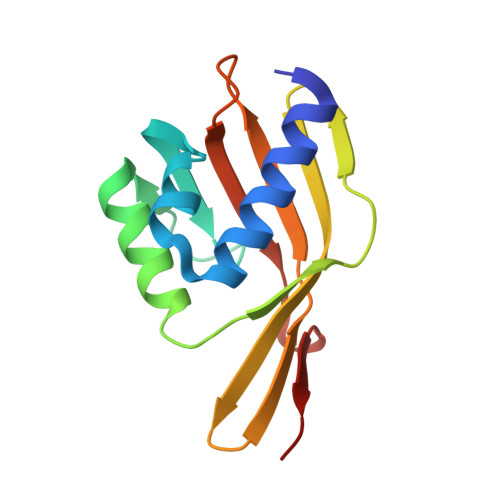An Activator-Blocker Pair Provides a Controllable On-Off Switch for a Ketosteroid Isomerase Active Site Mutant.
Lamba, V., Yabukarski, F., Herschlag, D.(2017) J Am Chem Soc 139: 11089-11095
- PubMed: 28719738
- DOI: https://doi.org/10.1021/jacs.7b03547
- Primary Citation of Related Structures:
5UGI - PubMed Abstract:
Control of enzyme activity is fundamental to biology and represents a long-term goal in bioengineering and precision therapeutics. While several powerful molecular strategies have been developed, limitations remain in their generalizability and dynamic range. We demonstrate a control mechanism via separate small molecules that turn on the enzyme (activator) and turn off the activation (blocker). We show that a pocket created near the active site base of the enzyme ketosteriod isomerase (KSI) allows efficient and saturable base rescue when the enzyme's natural general base is removed. Binding a small molecule with similar properties but lacking general-base capability in this pocket shuts off rescue. The ability of small molecules to directly participate in and directly block catalysis may afford a broad controllable dynamic range. This approach may be amenable to numerous enzymes and to engineering and screening approaches to identify activators and blockers with strong, specific binding for engineering and therapeutic applications.
Organizational Affiliation:
Department of Biochemistry, ‡Department of Chemistry, §Department of Chemical Engineering, and ∥Stanford ChEM-H, Stanford University , Stanford, California 94305, United States.















